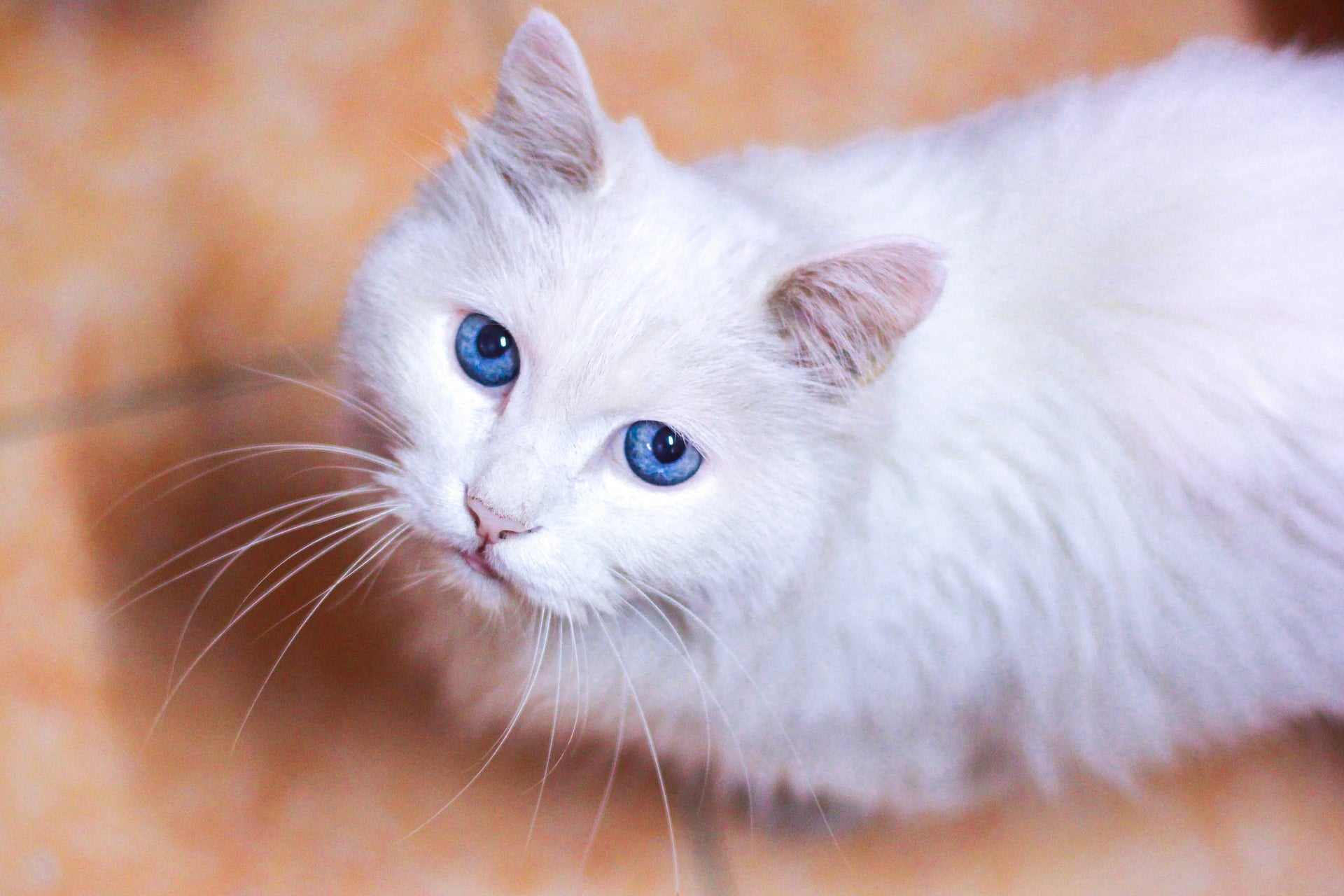Why is My Cat Pooping Outside the Litter Box?
August 7, 2023

Cats defecating outside of their litter boxes is a common issue that pet owners face, and it can stem from a variety of reasons, both physical and behavioral.
Cats are known for their clean habits, and when they use the bathroom literally anywhere other than the litter box, it can be both a mess and a cause for concern.
To prevent this behavior, you need to figure out what’s causing it and lead your cat back to where they should be going potty.
Here are some practical tips for getting your cat back on track.
Provide Enough Litter Boxes
Providing enough litter boxes for your cats is crucial for maintaining good hygiene and promoting proper bathroom habits. The general rule of thumb is to have at least one more litter box than the number of cats in your household. For instance, if you have one cat, you should have two litter boxes; if you have two cats, you should have three, and so on.
Having multiple litter boxes helps to ensure that each cat has access to a clean place to relieve themselves at all times, which can reduce territorial disputes and competition for resources. It also allows you to place litter boxes in different parts of your home, catering to your cats' preferences for quiet, low-traffic areas, which can encourage consistent litter box use.
More litter boxes mean that each individual box stays cleaner for longer, which is critical because cats are notoriously finicky about cleanliness and may refuse to use a box that they perceive as dirty.
Where the Litter Box is Located
The location of a litter box plays a significant role in whether a cat chooses to use it or not. Cats are private creatures who prefer to do their business in quiet, low-traffic areas where they feel safe and undisturbed. If a litter box is placed in a noisy, high-traffic area, such as next to a washing machine, near a frequently used door, or in a bustling family room, a cat may feel too stressed or exposed to use it.
The box should be easily accessible, so placing it in a location that requires navigating around numerous obstacles or climbing several flights of stairs can deter use, especially for older or physically impaired cats.
Cats also prefer not to eat and eliminate in the same area, so the litter box should be kept separate from their food and water dishes. By considering your cat's perspective and placing the litter box in a suitable location, you can encourage consistent use and prevent unwanted bathroom habits.
The Kind of Litter
The type of litter used in the box can greatly influence a cat's willingness to use it. Cats have sensitive paws and noses and may be particular about the texture and smell of their litter. Some cats prefer finer, sand-like litter that's soft on their paws, while others may prefer larger, pebble-like litter.
Scented litters might seem like a good idea to mask odors, but some cats may be put off by the strong artificial scents. Unscented, low-dust litters are generally a safe choice. Once you find a litter your cat likes, it's best to stick with it. Frequent changes in litter type can confuse or upset your cat, leading to elimination outside the box.
Always introduce new types of litter gradually, mixing them with the old litter to allow your cat to adjust. Remember, individual preferences can vary widely among cats, so it may take some experimentation to find a litter that your cat likes.
-------------------->HIGHLY RECOMMENDED<--------------------
Restore the Healthy Microbiome - When you need to bring order to chaos in your kittie's digestion, you need to restore the imbalance - and FAST!
This is THE solution recommended by veterinarians.
1) Daily Cat Probiotic (Extra Strength) - with a high dose of probiotic combined with prebiotic, digestive enzymes and L-glutamine it has 4 solutions in 1 product.
-------------------------------------------------------------
Changes at Home
Changes in the home environment can significantly impact a cat's litter box habits. Cats are creatures of routine and are highly sensitive to alterations in their surroundings. This sensitivity means that even minor changes, such as rearranging furniture, introducing new pets or family members, changing your work schedule, or moving to a new home, can cause stress and anxiety in your cat.
This stress can, in turn, lead to behavioral changes, including avoiding the litter box. More significant changes, such as a recent move or a new baby or pet, can create a heightened level of stress and disruption that might result in the cat defecating or urinating outside the litter box. Providing a safe, quiet space for your cat, maintaining routine as much as possible, and gradually introducing changes can help minimize stress and maintain good litter box habits during times of change.
How Stress Impacts Litter Box Habits
Stress can significantly impact a cat's behavior, including its litter box habits. When cats are stressed or anxious, they may begin to eliminate outside of the litter box. This can be their way of marking territory and asserting control over their environment in the face of perceived threats or changes.
Stressors for a cat can come in many forms, such as changes in the household routine, the addition or loss of family members or pets, moving to a new home, or even minor alterations like moving furniture around.
Stress can also cause physical symptoms like gastrointestinal upset, making it uncomfortable for them to use the box. If you notice changes in your cat's behavior, it's important to consider potential sources of stress and find ways to mitigate them. This might involve providing more predictable routines and offering quiet and secure spaces for your cat to retreat to.
Veterinarians Say Cat Probiotics Can Help
Probiotics, like Daily Cat, could potentially help a cat use the litter box more regularly and effectively by promoting a healthier gut environment. They are beneficial bacteria that can help maintain the natural balance of microorganisms in the intestines.
Various health issues, including gastrointestinal conditions such as diarrhea or constipation, can deter a cat from using the litter box.
By improving gut health and promoting regular, healthy bowel movements, probiotics can alleviate these issues. If a cat experiences less discomfort and more regularity when defecating, they may be more likely to use the litter box consistently.
-------------------->HIGHLY RECOMMENDED<--------------------
Restore the Healthy Microbiome - When you need to bring order to chaos in your kittie's digestion, you need to restore the imbalance - and FAST!
This is THE solution recommended by veterinarians.
1) Daily Cat Probiotic (Extra Strength) - with a high dose of probiotic combined with prebiotic, digestive enzymes and L-glutamine it has 4 solutions in 1 product.
-------------------------------------------------------------
Retraining Your Cat
Retraining a cat to use the litter box involves patience, consistency, and a careful analysis of potential factors contributing to the issue. Before moving to the behavioral side, ensure any health issues have been ruled out by a vet, as these may be causing your cat discomfort or distress when using the box.
Next, consider the litter box itself—is it clean, appropriately sized, and filled with the preferred type of litter? Is it located in a quiet, accessible location?
Make any necessary adjustments to ensure your cat feels comfortable with its toileting environment. Gradual reintroduction to the litter box may be necessary, which can involve confining the cat to a small, clean space with the litter box and gradually expanding its access to the rest of the house as successful litter box use is established.
Throughout this process, remember to use positive reinforcement, such as treats or praise, when your cat uses the box correctly. Consult a vet or animal behaviorist for more specific guidance tailored to your cat's individual needs and situation.
Read More:
Why Isn’t My Cat Using Her Litter Box?
Perspectives and Advances in Probiotics and the Gut Microbiome in Companion Animals
The Behavioural Effects of Innovative Litter Developed to Attract Cats
Feline Litter Box Issues Associate With Cat Personality, Breed, and Age at Sterilization

